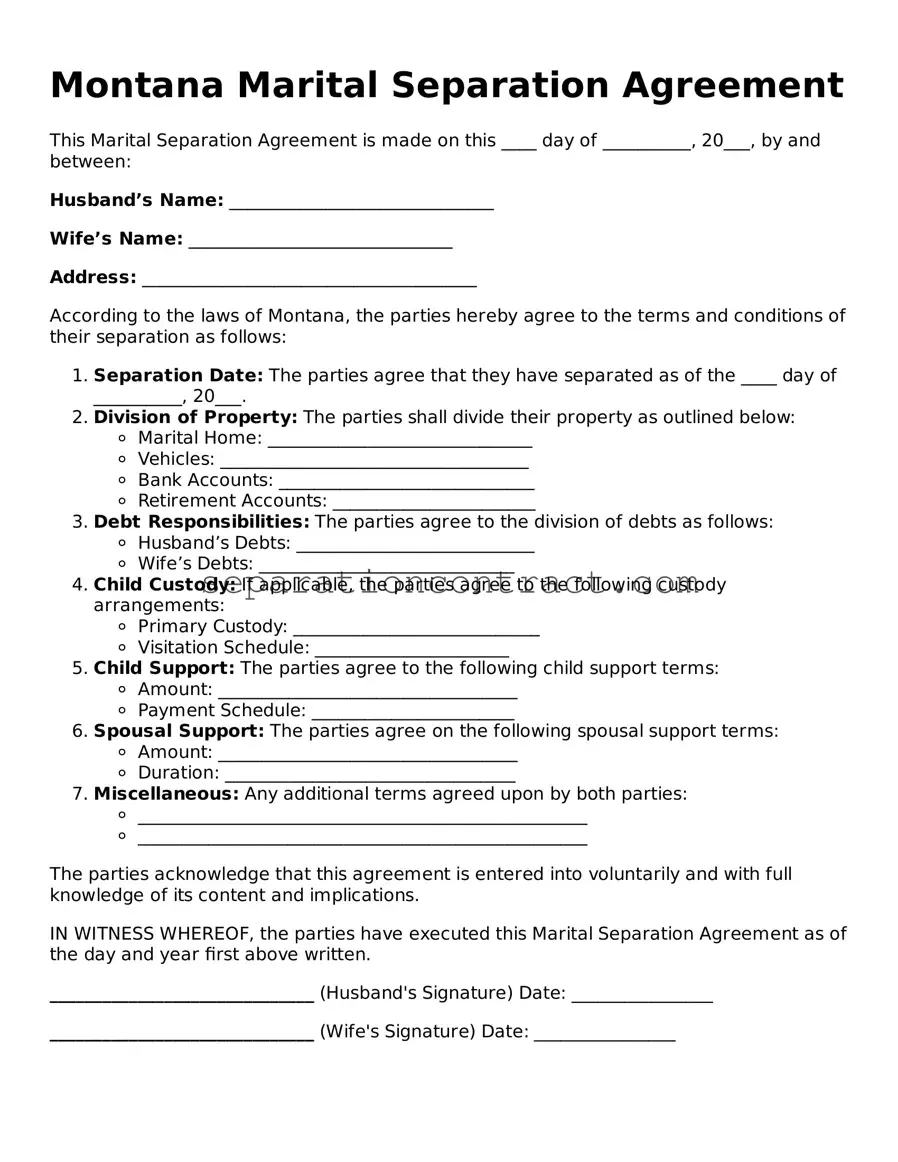Filling out the Montana Marital Separation Agreement form can be a complex process, and several common mistakes can lead to complications later on. One frequent error is failing to provide complete information. Each section of the form requires accurate details about both parties. Omitting information can create confusion or delays in the processing of the agreement.
Another mistake is not clearly defining the terms of the separation. It is essential to outline the specifics regarding property division, child custody, and support obligations. Vague language can lead to misunderstandings and disputes down the line. Clarity is key in ensuring that both parties have a mutual understanding of their rights and responsibilities.
Many individuals also overlook the importance of reviewing the agreement thoroughly before signing. Rushing through the process may result in missing critical details or making errors. Taking the time to carefully read the document can prevent future issues. It is advisable to have a trusted friend or legal advisor review the agreement for additional insights.
Inadequate witness signatures represent another common oversight. Montana law requires that the agreement be signed by both parties and witnessed. Failing to include appropriate signatures can render the agreement unenforceable. Ensuring all necessary parties sign the document is crucial for its validity.
People often forget to consider tax implications when dividing assets. Certain transfers may have tax consequences that could affect both parties. It is wise to consult a financial advisor to understand these implications and plan accordingly. Ignoring this aspect can lead to unexpected financial burdens.
Additionally, some individuals neglect to update their estate plans after completing the separation agreement. Changes in marital status can significantly impact wills, trusts, and beneficiary designations. Updating these documents ensures that they reflect the new circumstances and intentions of both parties.
Another mistake involves not addressing future changes in circumstances. Life is unpredictable, and situations such as job loss or relocation can arise. Including provisions for potential modifications in the agreement can help both parties navigate future challenges more smoothly.
Finally, individuals may not consider the emotional aspects of the separation. While the form is a legal document, it also represents a significant life change. Taking time to process feelings and communicate openly can foster a healthier transition for both parties. Addressing emotional needs alongside legal ones can contribute to a more amicable separation.
